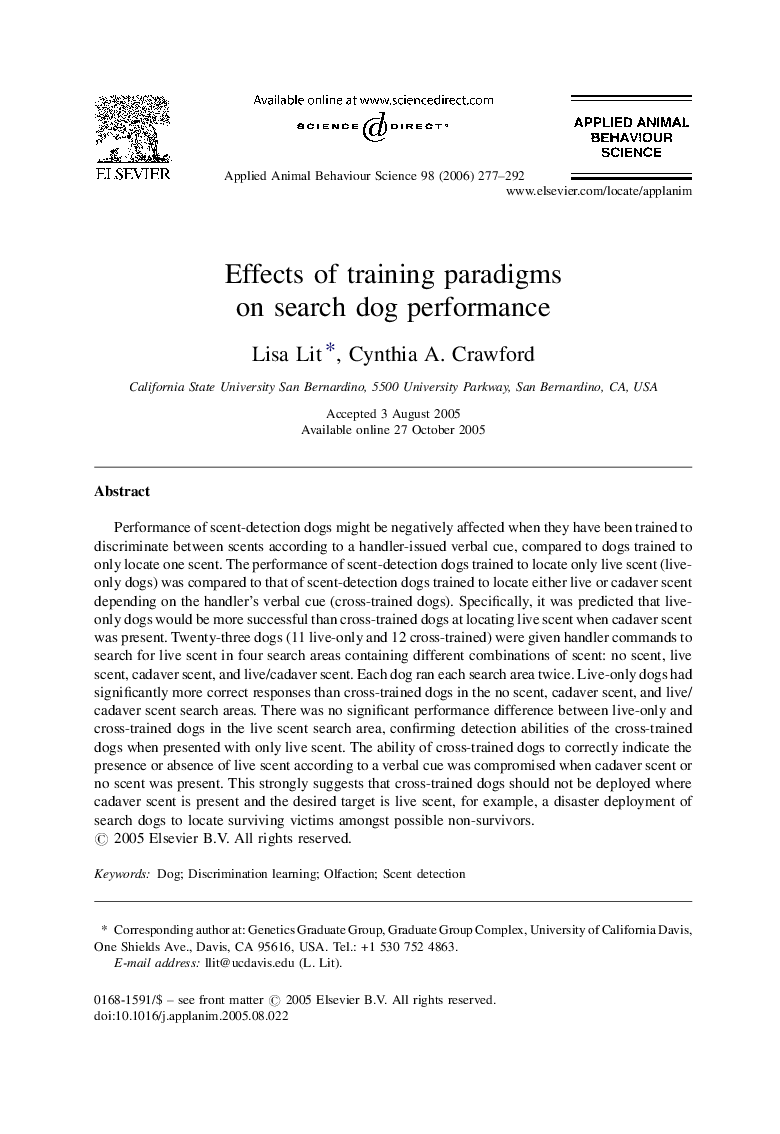| Article ID | Journal | Published Year | Pages | File Type |
|---|---|---|---|---|
| 4524262 | Applied Animal Behaviour Science | 2006 | 16 Pages |
Performance of scent-detection dogs might be negatively affected when they have been trained to discriminate between scents according to a handler-issued verbal cue, compared to dogs trained to only locate one scent. The performance of scent-detection dogs trained to locate only live scent (live-only dogs) was compared to that of scent-detection dogs trained to locate either live or cadaver scent depending on the handler's verbal cue (cross-trained dogs). Specifically, it was predicted that live-only dogs would be more successful than cross-trained dogs at locating live scent when cadaver scent was present. Twenty-three dogs (11 live-only and 12 cross-trained) were given handler commands to search for live scent in four search areas containing different combinations of scent: no scent, live scent, cadaver scent, and live/cadaver scent. Each dog ran each search area twice. Live-only dogs had significantly more correct responses than cross-trained dogs in the no scent, cadaver scent, and live/cadaver scent search areas. There was no significant performance difference between live-only and cross-trained dogs in the live scent search area, confirming detection abilities of the cross-trained dogs when presented with only live scent. The ability of cross-trained dogs to correctly indicate the presence or absence of live scent according to a verbal cue was compromised when cadaver scent or no scent was present. This strongly suggests that cross-trained dogs should not be deployed where cadaver scent is present and the desired target is live scent, for example, a disaster deployment of search dogs to locate surviving victims amongst possible non-survivors.
